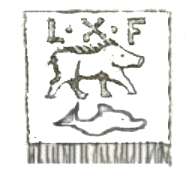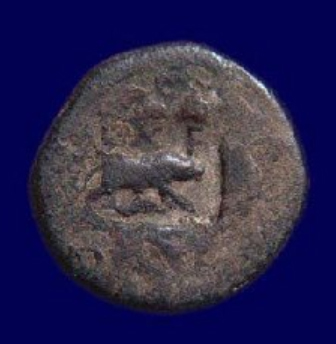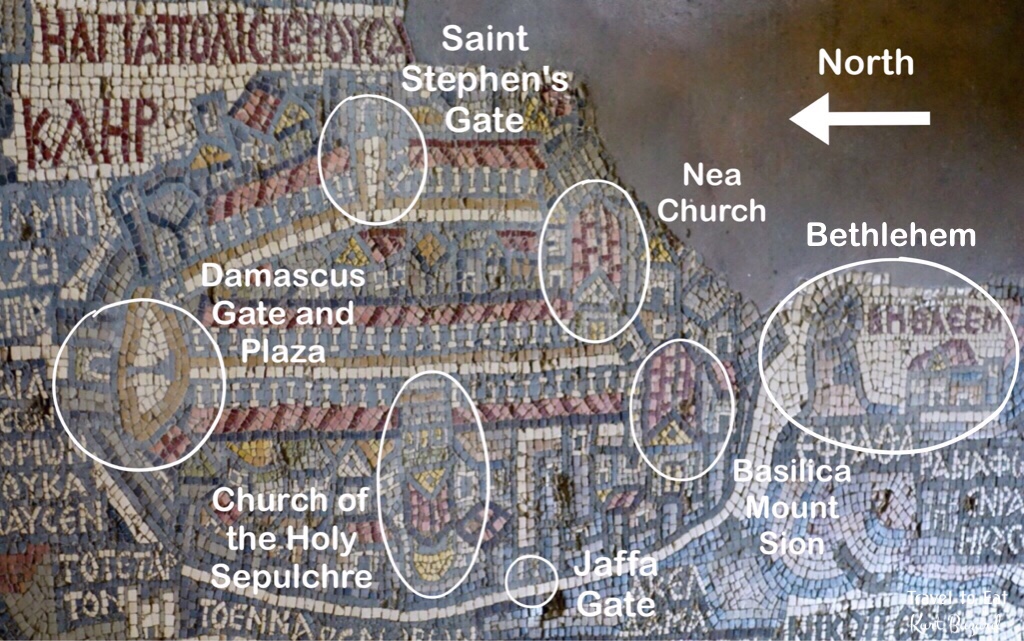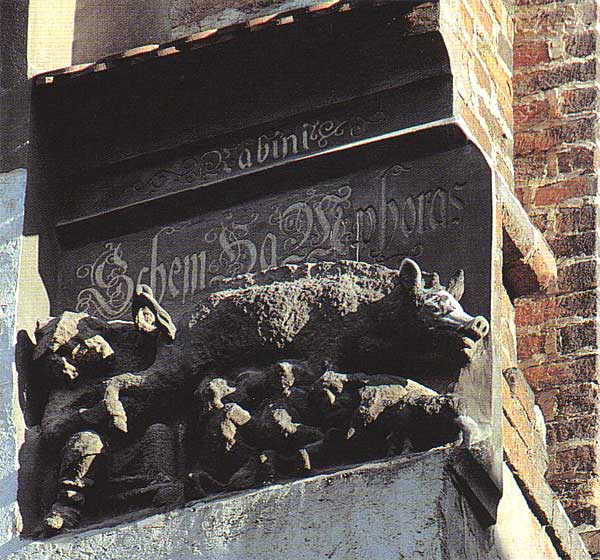Interpretations of the vision of four beasts in Daniel 7 often identify the fourth un-named beast as a dragon. But do the details of the prophecy justify this? Is there a more suitable candidate for the identity of Daniel’s fourth beast?
The several prophecies throughout the book of Daniel appear as pieces in a large puzzle. Each prophecy shows a part of the same master plan of history from the time of Daniel, up until today, and into the future. The prophecies do not finish until the Kingdom of God has been established on earth, and only then will the puzzle be complete.
In studying various translations of the book of Daniel, in Hebrew, Greek and English, we have become convinced that it is a book about Jewish history, as influenced by other nations. Four times in Daniel’s prayer in chapter 9 Daniel prays to God about “thy people”.
The oppression of the Jews throughout history has been a result of the curses that they were warned of in Leviticus 26 and Deuteronomy 28: If they did not stay faithful to Almighty God, and refused to worship false gods they would be persecuted. They would be dispersed from the Promised Land that they were about to enter. They would be attacked by wild beasts, among other calamities. Finally, an iron yoke would be put on them by a nation that would come from a great distance and speak a foreign language.
Centuries later, people from other nations who came into a covenant relationship with the God of Israel, through belief in the Lord Jesus Christ, would also suffer oppression from similar persecutors.
Daniel's Nightmare Vision
Daniel had a nightmare which was recorded in the 7th chapter of his book. He saw a stormy sky. Four great beasts came out of the great sea, the Mediterranean Sea. These were not natural beasts, as they had features which were unlike anything Daniel had ever seen: A lion with eagle’s wings! A bear with ribs in its mouth! A leopard with 4 heads and 4 birds’ wings! And worst of all a monster!
Daniel could cope with the first 3 beasts, but the monster terrified him.
“After this I saw in the night visions, and behold a fourth beast, dreadful and terrible, and strong exceedingly; and it had great iron teeth: it devoured and brake in pieces, and stamped the residue with the feet of it: and it was diverse from all the beasts that were before it; and it had ten horns.”
I considered the horns, and, behold, there came up among them another little horn, before whom there were three of the first horns plucked up by the roots: and, behold, in this horn were eyes like the eyes of man, and a mouth speaking great things.”
I beheld then because of the voice of the great words which the horn spake: I beheld even till the beast was slain, and his body destroyed, and given to the burning flame.” (v 11).
Picture below: The fourth beast of Daniel Chapter 7, depicted as a wild boar.

Daniel was
“grieved in my spirit in the midst of my body, and the visions of my head troubled me. I came near unto one of them that stood by, and asked him the truth of all this. So he told me, and made me know the interpretation of the things.” (Daniel 7 v 7, 8,15,16, KJV)
The angel in the vision told Daniel:
“These great beasts, which are four, are four kings, which shall arise out of the earth. As concerning the rest of the beasts, they had their dominion taken away: yet their lives were prolonged for a season and time.” (v 17,18)
The Jews and many Christian Bible students have concluded that these four kings were the “four empires” that dominated the region from Daniel’s time, until now:
Babylon, Medo-Persia, Macedonia-Greece and Roman.
Many also conclude that these same empires are equivalent to the metals (gold, silver, bronze and iron) in Nebuchadnezzar’s nightmare image in Daniel chapter 2.
A study of history shows that the first three empires were successively conquered. The monarchies and civilisations continued in their countries, but with reduced power.
Then Daniel wanted to know the truth of the fourth beast:
It was “diverse from all the others, exceeding dreadful, whose teeth were of iron, and his nails of brass; which devoured, brake in pieces, and stamped the residue with his feet; And of the ten horns that were in his head, and of the other which came up, and before whom three fell; even of that horn that had eyes, and a mouth that spake very great things, whose look was more stout than his fellows.”(v 19,20)
Daniel beheld
“the same horn made war with the saints, and prevailed against them; until the Ancient of days came, and judgment was given to the saints of the most High; and the time came that the saints possessed the kingdom.”(v 20,21)
He was told:
“The fourth beast shall be the fourth kingdom upon earth, which shall be diverse from all kingdoms, and shall devour the whole earth, and shall tread it down, and break it in pieces.”(v.23)
This fourth beast would conquer most of the known civilised world. The Roman Empire eventually stretched from Portugal and northern Africa in the west, to the Middle East, as far as Persia. It included England, southern Europe , the Balkans and Turkey.
The Romans were particularly famous for their cruelty, which included the crucifixion of thousands of people, including Jesus. The Jews were massacred by their hundreds of thousands, and tens of thousands were dispersed as slaves throughout the region. Many Christians were also martyred for their faith.
The fourth beast is not identified in the Bible. Some call it the anonymous beast. Others describe it is a crocodile, or a dinosaur, or even a dragon. None of these examples seemed appropriate to us, for the following reasons:
• crocodiles are renowned for their swimming, not trampling.
• most dinosaurs were reputedly herbivores, not carnivores.
• OT dragons (Heb. Tanniyn) are river or sea serpents (Is. 27:1; Eze 29:3) which do not tread down and stamp.
• The NT dragon in Rev 12 (Greek δράκων =drakon) is a serpent (Greek ὄφις ophis ) Rev.12:9, 14, 15 and 20:2) . Ophis is the Greek word in the Septuagint for the dry-land serpent in Genesis 3 that deceived Eve. Serpents do not trample under foot and break in pieces. The serpent that was “more subtil than any beast of the field”, was condemned : “Because thou hast done this, thou art cursed above all cattle, and above every beast of the field; upon thy belly shalt thou go, and dust shalt thou eat all the days of thy life:”
• The NT dragon in Rev,12 existed for centuries before Daniel had his vision. It spat out its venom during Jesus’ lifetime (Mat.3:7, Luk 3:7) when John called his opponents “a generation ( = offspring or fruit) of vipers”. It exists in parallel with the beasts out of the sea and the earth, giving his power, and his throne, and great authority to the beast out of the sea (Rev 13 v2,4). The beast out of the earth spoke like a dragon: ie. with venom (Deut 32 v33)
• The NT dragon will die 1000 years after the beasts of Revelation.20 v2.
Roman Emblems
The Romans used several different emblems for their legions, the wolf, the boar, the minotaur (bull with the head of a man) and the horse, as well as the imperial eagle.
The eagle standard, outranked the others, and was carried into battle.
The draco, or dragon, was a 4th century addition to the standards.
Neither the wolf, horse, minotaur, nor the Roman eagle exactly fit Daniel’s description of the fourth beast:
They do not “tread down” and “break in pieces”.
Eagles also obviously do not have teeth.
The most famous symbol for the city of Rome is a wolf with the suckling children Romulus and Remus, which is known as the ‘Capitoline Wolf’.

Picture above: The Capitoline she-wolf with the boys Romulus and Remus. Museo Nuovo in the Palazzo dei Conservatori, Rome.
One of the reputed founders of the city of Rome, Romulus, had been deified by the Romans as the “god” Quirinus, whose emblem was a boar.i
A search of Jewish texts has shown an ancient solution to this riddle:
A Jewish Explanation for Daniel's Fourth Beast
Natan Slifkin, popularly known as the "Zoo Rabbi", is a British-born Israeli Orthodox rabbi and director of the Biblical Museum of Natural History in Jerusalem, Israel. He has written a book called “The Torah Encyclopedia of the Animal Kingdom”. Volume One has a chapter on the wild Boar, where Rabbi Slifkin goes into great detail about how Jews regard the boar in the Hebrew Scriptures as representing the Roman Empire, as expounded in the Talmud and Midrash writings.ii
The first known Jewish source to symbolize the Roman Empire as a boar dated from the middle of the second century: A Talmudic passage (Pesahim 188b) cited the boar in Psalm 80 as being Rome.iii
A Psalm of Asaph describes how a vine (the Jews) was taken out of Egypt, and taken to Israel, where it prospered, but it was “wasted”, or ravaged by a “boar out of the wood, and the wild beast of the field doth devour it.” (Psalm 80 v 8-13)
The wild boar accurately fits the description of Daniel’s fourth beast:
Great teeth (tusks), that are used to tear and slash the prey, and feet that trample everything.( Dan 7:7,17)
Boars were regarded as an abomination by the Jews. Pigs were among the animals that were unclean. The Jews did not even like to say the name. Superficially, it presents as a kosher animal as it has cloven hooves, but this is deceptive, due to it not chewing the cud.
“And the swine, though he divide the hoof, and be clovenfooted, yet he cheweth not the cud; he is unclean to you.” (Lev 11 v 7)
“And the swine, because it divideth the hoof, yet cheweth not the cud, it is unclean unto you: ye shall not eat of their flesh, nor touch their dead carcase.” (Deut 14 v 8)
The Lord Jesus, in the Sermon on the Mount, said:
“Give not that which is holy unto the dogs, neither cast ye your pearls before swine, lest they trample them under their feet, and turn again and rend you.” (Matt 7 v 6)
Boars use their large tusks to disembowel their prey or enemies. They rip (rend) the tusks through their opponents’ stomachs like a sword, enabling them to kill much larger animals than themselves, such as horses, lions, men and even elephants.
Domestic pigs are notorious for turning their sties into mud baths. They trample everything underfoot, requiring special farming practices to prevent disease spreading.
Picture below: Man with dead wild boar, credit: Wade Seago

Feral pigs can cause widespread damage to crops, by rooting out plants and trampling what is left into the ground. They can be extremely vicious and very dangerous.
In 2017 three Islamic State fighters hiding in reeds were killed in Northern Iraq by a herd of wild boars.iv
The Lord Jesus also told the story of the prodigal son who was so reduced to poverty that he was made to feed swine in a distant country. (Luke 15)
In Matthew 8, Mark 5 and Luke 8 there is the story of how the Gadarenes’ 2,000 swine were sent running into the sea. These pigs were possibly being reared for the Roman Legions that used them for food and sacrifices to their pagan gods.
Roman Legions
Three Roman legions that were stationed in Judea during New Testament times used the boar as one of their emblems.
Pictures below: Roman coin with Caesar Titus on front and the Legion X Fretensis with boar and dolphin emblems on the rear. Credit: https://www.legionten.org/Studies/LXFstudies/LXFstudies.html


Legio X Fretensis used a boar on its standard, plaques and coins.
Titus ordered this legion’s standards to be taken into the temple for sacrifices to ‘Jupiter’. It was involved with:
• the destruction of the monastery at Qumran,
• the sack of Jerusalem,
• the destruction of the Temple in AD 70,
• the siege at Masada 3 years later.
• More than a million Jews were killed. 90,000 prisoners were taken to Rome, along with the treasures from the Temple, as displayed on the Arch of Titus in Rome.v
• This legion was stationed in the new city Aelia Capitolina which was built on the site of Jerusalem after the Bar Kokhba revolt in 136 AD.
Further research on the history of the Legio X Fretensis has shown that archaeologists, who were working in an area just north of Jerusalem, have discovered the remains of the kiln works used by the legion. Thousands of clay tile remnants have been found scattered around the city. The majority show the marks of the legion, with letters and shapes of boars/ and or galleys/ and or dolphins.
The legion built a camp in Jerusalem, and controlled the city for at least 2 centuries, as a result of the Bar Kockba revolt by the Jews in 135 AD.
In his book, “Hadrian: The Restless Emperor”, Anthony Birley wrote about the early Christian historian, Eusebius, also known as Jerome, who lived in Bethlehem:
‘Hadrian commanded by legal decree and ordinances that the whole nation should be absolutely debarred from entering even the district around Jerusalem, so that it could not see its ancestral home even from a distance'. Thus Eusebius. The ban on circumcision was not lifted, and the rebuilding of Jerusalem as a pagan city, Aelia Capitolina, was renewed and completed. Jerome adds the detail that 'the statue of Hadrian on horseback stands to this very day on the site of the Holy of Holies' – together with 'an idol of Jupiter', he states elsewhere.
He also writes of a temple of Jupiter at the place of the resurrection and Eusebius refers to a shrine of Aphrodite at the site of Jesus' tomb or at the place of the crucifixion. Coins of the colonia Aelia suggest that Bacchus, Sarapis and the Dioscuri were also worshipped there.
Finally, according to Jerome, outside the gate on the Bethlehem road there was a marble image of a pig: this must have been the emblem of the legion X Fretensis, a wild boar. It is hardly surprising that when Hadrian's name occurs in the rabbinical literature it is generally accompanied by the imprecation, 'May his bones rot!’.vi
This gate would have been the western gate in the wall that the Romans built in Jerusalem. This gate and the road to Bethlehem are shown in the famous Madaba map that was discovered in Jordan, shown below.
Picture below: Madaba map details.vii

The Damascus Gate, at the north of the city, is on the left of the main street, the cardo, that runs left to right through the middle of the city. A gate is shown in the lower western wall. There are white tiles running north from this gate, the Jaffa Gate, towards the cardo. White tiles follow the city wall to the right of the western gate, with the town of Bethlehem (βHθλεεm) Ephratah (εφραθα) in line with the cardo.
Professor Ismar Schorsch, chancellor emeritus of The Jewish Theological Seminary (NY), wrote in his article “The Story of Pig as Taboo”:
“The destruction of Jerusalem by the Romans transformed the pig in the Rabbinic mind into a symbol for Rome. The emblem of the Tenth Legion which occupied the ruins of Jerusalem after 70 C.E. was a boar. After the defeat of Bar Kochba in 135, the emperor Hadrian turned Jerusalem into a Roman city and, according to the Latin Church Father Jerome, who lived in Bethlehem for the last 30 years of his life, "In front of the gate which led to Bethlehem, he [Hadrian] placed a pig carved in marble signifying that the Jews were subject to the Romans."
For Ashkenazic Jews in the Middle Ages, the pig continued to serve as the symbol of Daniel's fourth and final kingdom in the famous prophecy by which Jews calculated the hoped-for coming of the messiah. Christendom with its seat in Rome was but an extension of the unrelieved cruelty of Roman dominion.
At the same time, however, it was in the German lands of the Holy Roman Empire that the pig as symbol was thrown back at the Jews in the form of an obscene anti-Jewish motif.
Picture below: Judensau sculpture at Wittenberg

From the 13th to the 16th century, Christian iconography adorned churches and public buildings with the scatological representation of Jews sucking at the teats of a sow. The one on the church in Wittenberg gained national notoriety when Martin Luther in 1543 in one of his two virulently anti-Jewish tracts fixed on it to prove that the pig is the source of the Jews' uncanny wisdom and power.
By transforming an object of revulsion into an object of veneration (much as the infamous "blood libel" did with blood), the Judensau (the Jews' sow), as it was called, made Jews less than human, accomplices of the devil and masters of black magic.
We have come full circle: from reviling the pig because it was sacrificed to the gods of the underworld to reviling Jews for their demonic otherness which is rooted in their worship of the pig.”viii
Recent Discovery of Mosaic of Daniel's Beasts
Another ancient mosaic, found this year (2019) in the remains of a synagogue in Huqoq, northern Israel, has been identified as having the oldest known illustrations of the beasts in Daniel’s vision of four beasts.
According to Dr. Jodi Magness, professor at UNC-Chapel Hill, who has been heading the archaeological project at the almost 1,600-year old Huqoq site, a second surprising mosaic was uncovered in the synagogue’s north aisle, with panels depicting beasts that are described in chapter 7 of the Book of Daniel. There, the Babylonian-captive prophet uses the creatures to represent the four kingdoms leading up to the end of days, explained Magness. The identification of the beasts was confirmed through a fragmentary Aramaic inscription referring to the first beast: a lion with eagle’s wings.
“The lion itself is not preserved, nor is the third beast,” she said. “However, the second beast from Daniel 7:4 – a bear with three ribs protruding from its mouth – is preserved. So is most of the fourth beast, which is described in Daniel 7:7 as having iron teeth,” said Magness.ix
We contacted Professor Magness to ask what type of beast is the fourth beast. We told her about our theory about the boar. She wrote back to say that they cannot divulge the information about the beast until the final results have been published, but she said that we will find the result quite interesting.
Daniel’s fourth beast was a terrifying sight to behold. There is probably no animal as disgusting to Jewish sensitivities as the pig.x We think that a ferocious wild boar is an appropriate candidate for the fourth beast. It helps us to visualize it and have a greater appreciation for the Jewish perception and connection with the Roman Empire.
The Roman beast dominated the Jews in its empires, Europe, the Mediterranean basin, and Russia, for two millennia. The beast was nearly killed at the end of World War I, when the empires ceased and the monarchs were deposed. However, members of the “Roman” royal families, the Habsburgs and Romanovs, have survived and are preparing to reign again.
This abominable beast is still relevant to today. The fourth beast’s head will revive as part of the “Beast out of the sea” in Revelation 13. The 10 horn kings will be active in the battle of Armageddon. (Rev.16:14). This is “the beast that was, and is not, and yet is”. Rev 17:8
References
i Shock And Awe: Battles Of The Gods In Roman Imperial Warfare, Part 1, by Everett L. Wheeler. 2009 Paris. https://www.academia.edu/4104234/Shock_and_Awe_Battles_of_the_Gods_in_Roman_Imperial_Warfare_Part_I
ii The Torah Encyclopedia of the Animal Kingdom, Volume 1, by Natan Slifkin, pages 332-335. 2015 ISBN 9781592644049, www.biblicalnaturalhistory.org
iii Jerusalem against Rome, By Mireille Hadas-Lebel. Peeters Publishers, 2006 ISBN: 9789042916876
iv https://www.timesofisrael.com/three-islamic-state-fighters-said-killed-by-wild-boars/
v http://www.josephus.org/FlJosephus2/warChronology7Fall.html
vi Hadrian: The Restless Emperor, by Anthony R. Birley. 1997 Routledge.
vii https://traveltoeat.com/wp-content/uploads/2016/07/Photo-Jul-26-2016-628-PM.jpg
viii http://www.jtsa.edu/the-story-of-pig-as-taboo
ix https://www.timesofisrael.com/first-artistic-depiction-of-little-known-exodus-story-uncovered-at-huqoq/
x https://www.chabad.org/library/article_cdo/aid/2376474/jewish/Pigs-Judaism.htm
Ellen and Jean Reid,
The Bible Museum, Australia.
www.thebiblemuseum.com.au
Email:
The models of Daniel’s four beasts, used in this article, were made by Jean Reid for use in the Bible Museum in Australia.
An edited version of this article appeared in The Testimony Magazine, October 2019, pages 383-386. Click here to download the issue, or go to http://testimonymagazine.com/issues/2019/10

